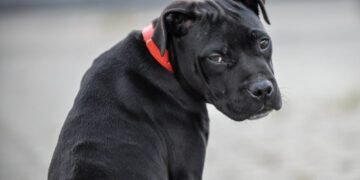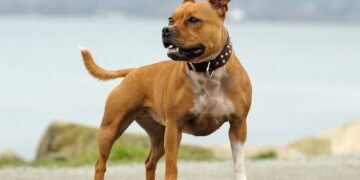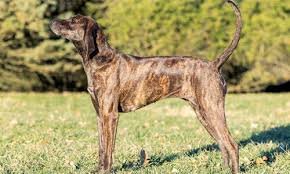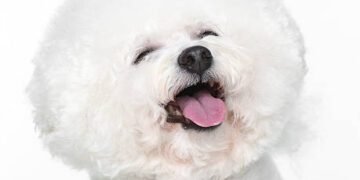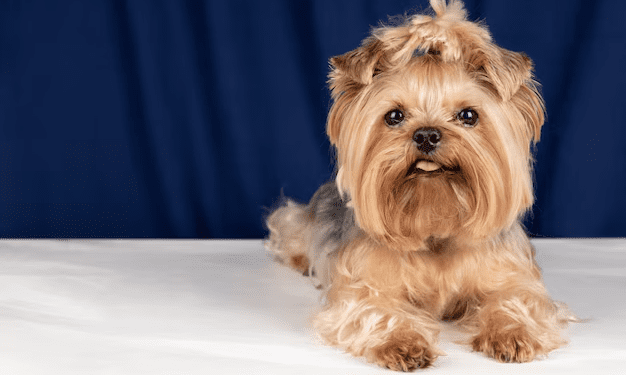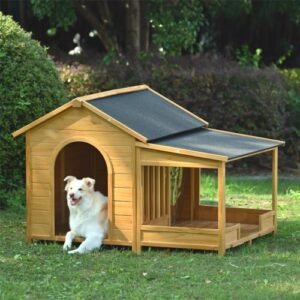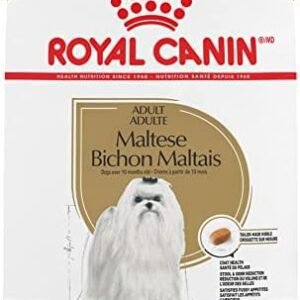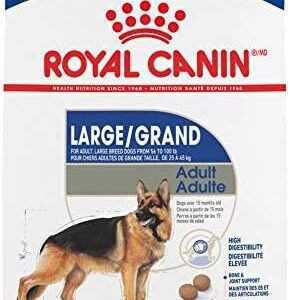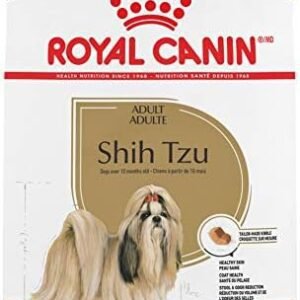Did you know that Lhasa Apsos were considered sacred in their native Tibet? These small yet resilient dogs played an integral role as companions and watchdogs in Tibetan monasteries and palaces. Their history spans over a thousand years, making them one of the oldest recognized breeds in existence. But what truly sets the Lhasa Apso apart is not just its age but the mystique surrounding its name.
The name “Lhasa Apso” provides a window into both its origin and defining characteristic. “Lhasa” is derived from the Tibetan capital, Lhasa, which is a testament to the breed’s deep-rooted connection to the region. “Apso,” on the other hand, translates to “bearded” or “long-haired” in Tibetan, perfectly describing the most striking feature of these dogs: their luxurious, flowing coat.
These dogs were revered by Tibetan monks and nobility, not just for their charming appearance but also for their vigilant and protective nature. It was believed that Lhasa Apsos brought good luck and fortune to their owners. In fact, they were often presented as gifts, although obtaining one directly from the Tibetan monks was no small feat, as they were selectively bred and seldom left their homeland.
Table of Contents
Lhasa Apso Breed Characteristics
Now that we have uncovered the rich history of the Lhasa Apso, let’s delve deeper into the breed’s unique physical characteristics and temperament, shedding light on what makes them such extraordinary companions.
Physical Characteristics
Size: Lhasa Apsos are small dogs, standing between 10 to 11 inches at the shoulder and weighing 12 to 18 pounds. This compact size makes them versatile and suitable for a variety of living environments.
Coat Type: The most iconic feature of the Lhasa Apso is undoubtedly its double coat. The outer layer is long, straight, and dense, providing protection, while the undercoat offers insulation. Their coat comes in various colors, including shades of gold, honey, black, white, or combinations of these.
Distinguishing Features: Their facial appearance is truly distinctive, boasting a beard and mustache that gives them an almost regal and wise countenance. Their pendant-shaped ears frame their expressive eyes, which are dark and deeply set, revealing a discerning and alert nature.
Temperament
Lhasa Apsos are known for their spirited temperament, which beautifully blends independence with loyalty, making them extraordinary companions.
Loyalty: These dogs exhibit fierce loyalty to their families. They form strong bonds with their owners and are unwaveringly protective of their loved ones.
Independence: Despite their diminutive size, Lhasa Apsos are characterized by their self-reliance, rooted in their history as watchdogs. They carry themselves with a confident and independent demeanor.
Alertness: Their keen sense of hearing and protective instincts make them exceptional watchdogs. Lhasa Apsos are quick to sound the alarm if anything seems amiss, and their alert nature is truly commendable.
Confidence: These dogs exude confidence and are not easily intimidated. They possess a natural dignity that sets them apart.
Reserved Around Strangers: While deeply loyal to their families, Lhasa Apsos can be reserved around unfamiliar faces. To ensure their well-rounded socialization and comfort in various situations, early socialization is essential.
Now that we have an in-depth understanding of the Lhasa Apso’s history and unique characteristics, we can move on to exploring other essential aspects of this breed, such as grooming, exercise requirements, and health considerations. Understanding these facets is crucial for anyone considering the companionship of a Lhasa Apso or simply seeking to expand their knowledge of this remarkable breed.
In our continued quest to unravel the mystique of the Lhasa Apso breed, we will now explore essential information that potential owners and enthusiasts need to know. This segment will provide you with a detailed table summarizing key characteristics of the Lhasa Apso. From physical attributes to temperament and grooming needs, this table will serve as a valuable reference for those seeking comprehensive information about this remarkable breed.
Lhasa Apso Breed Characteristics Table
| Field | Information |
|---|---|
| Height | 10 to 11 inches |
| Weight | 12 to 18 pounds |
| Life Span | Approximately 12-15 years |
| Good with | Families, singles, seniors, and individuals seeking a loyal companion |
| Temperament | Loyal, independent, alert, confident, and reserved around strangers |
| Intelligence | High, displaying a keen understanding of their environment |
| Shedding Amount | Low to moderate, due to their double coat |
| Grooming | High, regular brushing, baths, and occasional professional grooming |
| Exercise Needs | Moderate, daily walks and interactive play sessions |
| Energy Level | Moderate, but they can be playful and energetic |
| Barking Level | Moderate, they are alert and may bark at unfamiliar sights and sounds |
| Drool Amount | Low, Lhasa Apsos are not prone to excessive drooling |
| Coat Length/Texture | Long, straight, and dense outer coat with an insulating undercoat |
| Colors | Variations of gold, honey, black, white, or combinations thereof |
| Patterns | Solid colors or multi-colored patterns, often with dark facial features |
Understanding these key characteristics is instrumental in making an informed decision about whether the Lhasa Apso is the right canine companion for your lifestyle. It’s not just about owning a dog; it’s about forming a lifelong bond with a unique and loyal friend.
Let’s embark on the next segment of our expedition to unveil the world of Lhasa Apsos.
Breed History and Origin
To truly appreciate the enchanting Lhasa Apso breed, it’s essential to delve into their historical roots and the fascinating journey that led to their development. This section will take you on a journey through time, exploring the breed’s history, notable traits, and the enduring relevance of their origin in shaping the Lhasa Apso we know today.
Exploring Their Roots
The history of the Lhasa Apso is a captivating narrative that unfolds in the mystical land of Tibet, deep within the Himalayan Mountains. This breed’s origin is intertwined with the very fabric of Tibetan culture, making them one of the most revered and cherished breeds in the world. Here are the key milestones in the historical development of the Lhasa Apso:
Ancient Origins: Lhasa Apsos can trace their lineage back over a thousand years, making them one of the oldest dog breeds known to humanity. They were meticulously bred by Tibetan monks and nobility in the sacred city of Lhasa, which lends its name to the breed.
Tibetan Companions: In Tibet, the Lhasa Apso was highly regarded as both a loyal companion and an alert watchdog. Their small size allowed them to navigate the monasteries and palaces with ease, and their protective instincts made them valued guardians.
Mystique Surrounding Breeding: Acquiring a Lhasa Apso was a challenging endeavor, as they were selectively bred in Tibet and rarely left the region. Tibetan monks, in particular, played a significant role in breeding and preserving the purity of the breed.
Tokens of Goodwill: Lhasa Apsos were often presented as gifts to bring good luck and fortune. These small dogs were a symbol of goodwill and were highly sought after by dignitaries and emissaries who visited Tibet.
Ancient Lineage: The Lhasa Apso’s lineage includes other Tibetan breeds like the Tibetan Mastiff and Tibetan Spaniel. These breeds share a common ancestry, and their distinct traits were carefully cultivated.
Notable Traits
The Lhasa Apso’s history is rich with distinctive traits that have captivated the hearts of dog enthusiasts worldwide. These notable characteristics have made the breed a beloved treasure throughout history and continue to do so today:
Luxurious Double Coat: The most iconic feature of the Lhasa Apso is undoubtedly their magnificent double coat. This coat serves both aesthetic and practical purposes, with a long, straight, and dense outer layer that offers protection from the elements and an insulating undercoat to keep them warm in the Himalayan cold.
Guardian Instincts: These small dogs were not just companions but also diligent watchdogs. Their keen sense of hearing and protective nature made them invaluable in Tibetan monasteries, where they would alert the residents to any intruders or disturbances.
Mystical Appearance: The Lhasa Apso’s appearance is steeped in mystique. Their beard and mustache lend them a wise and regal countenance, while their pendant-shaped ears frame expressive, dark, and deeply set eyes.

Relevance of Origin
The origin of the Lhasa Apso continues to influence its characteristics and reputation to this day. Here’s how the breed’s Tibetan heritage remains relevant:
Temperament: The Lhasa Apso’s independent yet loyal nature is a direct reflection of its historical role as both a companion and guardian. They continue to be deeply devoted to their families while maintaining a certain self-reliance.
Appearance: The breed’s distinctive appearance, including its luxurious coat and regal facial features, has remained largely unchanged over centuries. This is a testament to the reverence for tradition and heritage.
Protective Instincts: Lhasa Apsos have a natural inclination to be watchful and alert, which is deeply rooted in their history as protectors of Tibetan monasteries. This quality makes them both charming companions and effective watchdogs.
Understanding the Lhasa Apso Breed’s Traits
In this section, we’ll delve deeper into the Lhasa Apso breed’s traits, covering their physical characteristics, temperament, suitability as family pets, environmental needs, and common behavioral traits. Understanding these aspects is essential for potential Lhasa Apso owners and anyone interested in this captivating Tibetan breed.
Physical Characteristics
The Lhasa Apso possesses a distinct and captivating physical appearance. Their unique traits set them apart in the world of dog breeds.
Size: Lhasa Apsos are small dogs with a sturdy build. They typically stand between 10 to 11 inches at the shoulder, and their weight ranges from 12 to 18 pounds. This compact size makes them suitable for various living environments, including apartments and houses with small yards.
Coat Type: The most iconic feature of the Lhasa Apso is undoubtedly their luxurious double coat. The outer coat is long, straight, and dense, providing protection from the elements. Meanwhile, the undercoat offers insulation, keeping them warm in cold climates. Their coat can come in various colors, including variations of gold, honey, black, white, or combinations of these.
Distinguishing Features: The Lhasa Apso’s facial appearance is particularly distinctive. They have a beard and mustache that give them an almost regal and wise countenance. Their pendant-shaped ears frame their expressive eyes, which are dark and deeply set, revealing their alert and discerning nature.
Temperament Overview
Understanding the Lhasa Apso’s temperament is crucial to determine their suitability as family pets and to appreciate their unique personality traits.
Independence: Despite their small size, Lhasa Apsos are known for their independent nature. This self-reliance is deeply rooted in their history as watchdogs in Tibetan monasteries and palaces. They carry themselves with a confident and self-assured demeanor
Alertness: Their keen sense of hearing and protective instincts make them excellent watchdogs. Lhasa Apsos are quick to sound the alarm if anything seems amiss. This vigilance adds an extra layer of security to your home.
Confidence: These dogs exude confidence. They are not easily intimidated and carry themselves with a certain dignity. This confidence is part of what makes them such charming and unique companions.
Reserved Around Strangers: While deeply loyal to their families, Lhasa Apsos can be reserved around unfamiliar faces. Early socialization is essential to ensure they are well-adjusted and comfortable in different social situations.
Suitability as Family Pets
Lhasa Apsos can be wonderful family pets when matched with the right family and living environment. Here are some considerations:
Families: Lhasa Apsos are well-suited for families with older children who understand how to interact with dogs respectfully. Due to their reserved nature, they may not be the best choice for households with very young, energetic children.
Singles and Seniors: Lhasa Apsos can be excellent companions for singles and seniors. Their loyalty and independent nature make them great for individuals who seek a devoted and manageable dog.
Compatibility with Other Pets: Lhasa Apsos can coexist with other pets, but early socialization is key. They may be reserved around other animals, and introducing them to new pets should be done gradually and under supervision.
Environmental Needs
Lhasa Apsos have specific environmental needs that should be considered when welcoming them into your home.
Living Space: These dogs can adapt to various living environments, including apartments and houses with small yards. However, they don’t require a large yard due to their size, making them suitable for urban livin
Temperature Sensitivity: Due to their Himalayan origins, Lhasa Apsos are well-suited for colder climates and may struggle in hot weather. It’s important to provide them with a cool and shaded environment during warm months.
Exercise Requirements: While they have moderate exercise needs, daily walks and playtime are essential to keep them healthy and happy. Mental stimulation is also important for these intelligent dogs.
Common Behavioral Traits
Lhasa Apsos display a range of behavioral traits that potential owners should be aware of. These traits can be both positive and challenging:
Positive Traits:
- Loyalty: Their loyalty to their owners is unwavering, and they make excellent companions for those who seek a devoted and affectionate dog.
- Alertness: Lhasa Apsos’ vigilance and protective instincts add an extra layer of security to your home.
- Adaptability: They can adapt to various living environments and are suitable for both families and individuals.
Challenging Traits:
- Reserved Around Strangers: Their wariness of unfamiliar people means that early socialization is essential to prevent excessive shyness or fearfulness.
- Independence: While independence can be a positive trait, it may also manifest as stubbornness during training. Consistent and positive reinforcement-based training is recommended.
Communication: Lhasa Apsos are known to bark, and their alert nature may lead to vocalization when they sense something amiss. Proper training can help manage excessive barking.
- Grooming Demands: While their stunning coat is a hallmark of the breed, it requires regular grooming to prevent matting and maintain its beauty.
Understanding the Lhasa Apso’s traits, both positive and challenging, is essential for prospective owners. It helps ensure that they are well-prepared to provide the care, training, and socialization needed to raise a well-adjusted and happy Lhasa Apso.
Popularity and Recognition
Current Popularity: The Lhasa Apso, though not as popular as some other breeds, maintains a steady and devoted following. Its appeal lies in its unique appearance, spirited personality, and suitability for various living environments. While it may not top the list of most popular breeds, it continues to capture the hearts of those who appreciate its distinct qualities.
In recent years, there has been a growing interest in smaller dog breeds, particularly among individuals and families living in urban environments. The Lhasa Apso’s adaptability to apartment living and manageable size have made it an attractive choice for those seeking a loyal and charming companion in a compact package.
Breed Recognition: The Lhasa Apso is recognized and acknowledged by major kennel clubs and breed organizations around the world. Notable organizations that officially recognize the Lhasa Apso include:
American Kennel Club (AKC): The AKC officially recognizes the Lhasa Apso and categorizes it as a member of the Non-Sporting Group. This recognition reflects the breed’s status and the standards by which Lhasa Apsos are judged in conformation events.
The Kennel Club (UK): In the United Kingdom, the Kennel Club recognizes the Lhasa Apso as a distinct breed. This recognition ensures that Lhasa Apsos in the UK adhere to breed standards and guidelines.
Fédération Cynologique Internationale (FCI): The FCI, a global canine organization, also officially recognizes the Lhasa Apso. This recognition extends beyond individual countries and demonstrates the breed’s international standing.
Notable Breed Varieties: The Lhasa Apso is a distinctive breed in its own right, and there are no distinct varieties like those seen in some other breeds (e.g., American vs. English Bulldogs). However, within the breed, you can find some variations in coat color and patterns. Lhasa Apsos come in a variety of coat colors, including various shades of gold, honey, black, white, or combinations of these. Some Lhasa Apsos may have solid colors, while others exhibit multi-colored patterns, often with dark facial features.
These variations in coat color and patterns add to the individuality and charm of each Lhasa Apso but do not constitute distinct breed varieties.
The Lhasa Apso’s unique charm and intriguing history continue to attract admirers and owners who appreciate its exceptional qualities. Whether as a loyal family companion or a cherished pet for singles and seniors, the Lhasa Apso’s enduring appeal makes it a treasured breed in the world of dogs companion.
Grooming Needs: Maintaining the Lhasa Apso’s Elegance
One of the most striking features of the Lhasa Apso is its luxurious double coat. To keep these Tibetan treasures looking their best and ensure their well-being, regular grooming is essential. In this section, we’ll dive into the grooming needs of Lhasa Apsos, covering everything from brushing to professional grooming.
Daily Brushing
The hallmark of the Lhasa Apso’s appearance is its long and flowing double coat. To maintain its beauty and prevent matting, daily brushing is crucial. Here’s how to approach daily brushing:
Brush Type: Use a pin brush or slicker brush to reach through the dense outer coat and prevent tangles. These brushes are effective in keeping the coat in good condition
Divide and Conquer: Due to the length and density of their coat, it’s a good practice to divide it into sections and brush through each section thoroughly. This ensures that you don’t miss any tangles or mats.
Be Gentle: While brushing, be gentle to avoid causing discomfort to your Lhasa Apso. Slow and careful brushing is more effective than vigorous brushing.
- Focus on Problem Areas: Pay extra attention to areas prone to matting, such as behind the ears, under the armpits, and the leg feathering. These areas tend to accumulate tangles and mats more quickly.
Bathing
Regular baths are essential to keep the Lhasa Apso’s coat clean and free of dirt or debris. Follow these bathing guidelines:
Frequency: Aim to bathe your Lhasa Apso approximately once every 3 to 4 weeks. Frequent bathing can strip the coat of natural oils, so it’s best to maintain a regular schedule.
Shampoo: Use a gentle dog shampoo that is specifically formulated for their coat type. Avoid using harsh human shampoos, as they can irritate their skin.
Rinsing: Thoroughly rinse the coat to ensure no shampoo residue remains, as this can lead to skin irritation.
- Drying: After the bath, gently towel-dry your Lhasa Apso, and use a hairdryer on a low and cool setting. Make sure they are completely dry, as moisture trapped in the coat can lead to mats and skin issues.
Topknot Care
Many Lhasa Apsos sport a topknot, a tied-up section of hair on their head. Here’s how to care for the topknot:
Cleanliness: Regularly clean and tie up the topknot to prevent hair from falling into their eyes. This not only keeps them comfortable but also maintains their vision.
Hair Bands: Use soft, non-pulling hair bands to secure the topknot. Avoid tight or elastic bands that could damage their hair.
Maintain Hygiene: Check the topknot for any dirt or debris and clean it as needed to prevent irritation or discomfort.
Professional Grooming
Many Lhasa Apso owners choose to enlist the services of professional groomers to maintain their dog’s coat. Here’s what you need to know about professional grooming:
Frequency: Professional grooming is typically done every 4 to 6 weeks. Groomers are experienced in handling the Lhasa Apso’s coat and can ensure it remains in top condition.
Maintenance: In addition to brushing and bathing, professional groomers can handle tasks such as trimming the coat, particularly around the paws and tail, to maintain a tidy appearance.
Ear and Eye Care: Groomers can also clean the ears and ensure that the Lhasa Apso’s eyes are free from excessive tearing and staining.
- Nail Trimming: Regular nail trimming is essential, and groomers can expertly handle this task to prevent overgrowth.
In the next section, we’ll explore the exercise requirements of Lhasa Apsos, ensuring they receive the physical and mental stimulation they need to thrive. Let’s continue our journey of understanding these Tibetan treasures.
Exercise Requirements: Keeping Lhasa Apsos Happy and Healthy
Lhasa Apsos may be small in size, but they have moderate exercise needs to keep them happy and healthy. In this section, we’ll delve into their exercise requirements, including daily walks, playtime, and training.
Daily Walks
Daily walks are a fundamental part of meeting the Lhasa Apso’s exercise needs. Here’s what you should consider:
Frequency: Aim for at least one or two daily walks. These walks provide physical exercise and mental stimulation for your Lhasa Apso.
Duration: A walk of around 20 to 30 minutes is typically sufficient. Adjust the duration based on your dog’s energy level and individual needs.
Variety: Vary your walking routes to keep things interesting for your Lhasa Apso. New scents and environments can stimulate their curious nature.
- Leash Training: Ensure your Lhasa Apso is well-trained to walk on a leash. This is not only for their safety but also for your control during walks.
Playtime
Interactive play sessions are a great way to engage your Lhasa Apso’s mind and provide additional exercise. Consider the following for playtime:
Toys: Invest in toys that encourage mental stimulation. Puzzle toys, treat-dispensing toys, and interactive games can keep your Lhasa Apso engaged.
Fetch: Lhasa Apsos often enjoy a game of fetch. This not only provides physical exercise but also reinforces their training.
Hide and Seek: Hide treats or toys around your home for your Lhasa Apso to find. This taps into their natural curiosity and keeps them mentally sharp.
- Training Games: Incorporate training sessions into playtime. Lhasa Apsos are intelligent and responsive to positive reinforcement techniques. Teaching them new tricks or reinforcing existing commands can be a rewarding and enjoyable experience for both you and your dog.
Training
Training is not just about obedience but also mental stimulation. Lhasa Apsos respond well to positive reinforcement techniques and enjoy the challenge of learning new commands. Here are some training considerations:
Basic Obedience: Teaching basic commands like sit, stay, and recall is essential for your Lhasa Apso’s safety and well-being. Consistent training helps create a well-behaved and well-adjusted dog.
Socialization: Early socialization is crucial for Lhasa Apsos to ensure they are comfortable in different situations and around unfamiliar people and animals. Exposing them to a variety of experiences in a positive way helps prevent shyness or fearfulness.
Mental Stimulation: Beyond basic obedience, engage your Lhasa Apso’s mind with more advanced training and tricks. They thrive on mental challenges and enjoy problem-solving.
- Positive Reinforcement: Use positive reinforcement techniques such as treats, praise, and rewards to motivate and encourage your Lhasa Apso during training. They respond well to these methods.
In summary, Lhasa Apsos have moderate exercise needs that combine daily walks, interactive playtime, and training sessions. Providing them with physical and mental stimulation is key to their well-being and happiness. These activities not only keep them physically fit but also nurture their intelligent and inquisitive nature.

Health Considerations: Caring for Your Lhasa Apso’s Well-Being
Lhasa Apsos are generally healthy dogs, but like all breeds, they can be prone to specific health issues. In this section, we’ll explore the common health considerations for Lhasa Apsos and provide guidance on how to keep them in optimal health.
Eye Problems
Lhasa Apsos are known to be susceptible to various eye conditions. Two common eye issues in the breed are:
Progressive Retinal Atrophy (PRA): PRA is a hereditary condition that leads to the gradual degeneration of the retina. It can result in progressive vision loss and, eventually, blindness. Regular eye check-ups are important to detect PRA early, as there is no cure, but early intervention can help manage the condition.
Dry Eye (Keratoconjunctivitis Sicca): Dry eye occurs when there is insufficient tear production, leading to discomfort, redness, and potential corneal damage. Treatment may involve artificial tear solutions and medications. Regular monitoring and treatment can help manage dry eye.
To care for your Lhasa Apso’s eye health:
- Schedule regular eye check-ups with a veterinarian or veterinary ophthalmologist.
- Be vigilant for signs of eye issues, such as excessive tearing, redness, squinting, or a change in the appearance of the eyes.
- Follow the recommended treatment plan if your Lhasa Apso is diagnosed with an eye condition.
Orthopedic Issues
Lhasa Apsos can be prone to certain orthopedic issues, with luxating patella being a common concern. Luxating patella is a condition in which the kneecap dislocates from its normal position. This condition can be painful and affect your dog’s mobility.
To address orthopedic issues:
- Maintain a healthy weight for your Lhasa Apso. Excess weight can exacerbate orthopedic problems.
- Consult with a veterinarian if you notice any limping, lameness, or signs of discomfort in your dog.
- Follow your vet’s recommendations for managing orthopedic issues, which may include weight management, physical therapy, or, in severe cases, surgery.
Respiratory Problems
Due to their short muzzle, Lhasa Apsos can be sensitive to extreme heat and may experience breathing difficulties in hot weather. It’s essential to:
- Avoid exposing your Lhasa Apso to high temperatures and provide a cool and shaded environment during warm months.
- Be cautious about strenuous exercise or walks during hot weather.
- Recognize signs of heatstroke, including heavy panting, difficulty breathing, and excessive drooling, and seek immediate veterinary care if necessary.
Dental Care
Lhasa Apsos, like many small dog breeds, can be prone to dental problems. To maintain their oral health:
- Establish a regular dental care routine, including brushing your dog’s teeth or using dental chews.
- Schedule professional dental cleanings as recommended by your veterinarian.
- Monitor for signs of dental issues such as bad breath, gum inflammation, or difficulty eating.
Lifespan and Longevity
Lhasa Apsos typically have a lifespan of around 12 to 15 years. Several factors can influence their longevity, and responsible care can contribute to a longer and healthier life for your beloved companion. Here are some tips to promote your Lhasa Apso’s longevity:
Regular Veterinary Check-Ups: Schedule routine check-ups with your veterinarian to monitor your dog’s health, discuss preventive measures, and address any emerging issues.
Healthy Diet: Provide a balanced and nutritious diet tailored to your Lhasa Apso’s specific needs. Consult with your veterinarian to choose the right food and feeding schedule.
Weight Management: Maintain a healthy weight for your dog to reduce the risk of orthopedic problems and other health issues. Avoid overfeeding and monitor their calorie intake.
Regular Exercise: Ensure your Lhasa Apso gets daily exercise, which includes walks and playtime. Exercise not only keeps them physically fit but also provides mental stimulation.
Grooming and Coat Care: Regular grooming and coat maintenance are essential to prevent matting and skin issues. A well-groomed coat contributes to overall health and comfort.
Dental Care: Prioritize your dog’s oral health with regular dental care. Brush their teeth, provide dental chews, and schedule professional cleanings as recommended.
Environmental Considerations: Be mindful of your Lhasa Apso’s environment, especially in hot weather. Avoid exposing them to high temperatures, and provide a cool and shaded space during warm months.
Socialization and Mental Stimulation: Engage your dog’s mind through socialization and mental stimulation. Lhasa Apsos thrive on interaction and problem-solving activities.
Positive Reinforcement Training: Train your Lhasa Apso using positive reinforcement techniques. This not only fosters good behavior but also provides mental challenges and strengthens the bond between you and your dog.
By incorporating these practices into your Lhasa Apso’s daily life and providing attentive care, you can significantly contribute to their longevity and ensure they lead a happy and healthy life.
Exercise and Activity Recommendations for Lhasa Apsos
Ensuring that your Lhasa Apso gets the right amount and type of exercise is essential for their overall well-being. Despite their small size, Lhasa Apsos are an active breed with moderate exercise needs. Regular exercise not only keeps them physically healthy but also mentally stimulated. In this section, we will provide you with a comprehensive exercise plan for your Lhasa Apso, addressing their specific needs.
Understanding Lhasa Apso Exercise Needs
Lhasa Apsos have a moderate energy level and enjoy being active, but they don’t require intense workouts like some larger breeds. It’s important to remember that their ancestors served as watchdogs in Tibetan monasteries, so they have a natural instinct to be alert and vigilant. This makes them responsive to their environment and curious about their surroundings.
Here’s a breakdown of their exercise needs:
Daily Walks: Lhasa Apsos benefit from daily walks. These outings provide both physical exercise and mental stimulation as they explore their environment, sniff around, and encounter new sights and scents. Aim for at least one or two walks a day, each lasting around 20 to 30 minutes.
Playtime: Interactive play sessions with toys or puzzles are excellent for engaging their minds. Lhasa Apsos are intelligent dogs, and they enjoy games that challenge their problem-solving skills. Short and frequent play sessions are ideal.
Training Sessions: Incorporating training sessions into their daily routine is another way to stimulate their minds. Lhasa Apsos are responsive to positive reinforcement training methods. Use treats and praise to reward good behavior and teach them new commands.
- Social Interaction: While not an exercise in the traditional sense, social interaction with other dogs and people is important for their well-rounded development. Lhasa Apsos can be reserved around strangers, so early socialization is vital to ensure they are comfortable in different situations.
Exercise Plan for Lhasa Apsos
Let’s break down an exercise plan that caters to the specific needs of Lhasa Apsos. Remember that individual exercise requirements may vary, so it’s essential to observe your dog’s behavior and adjust the plan accordingly. Here’s a sample exercise plan for your Lhasa Apso:
Daily Walks
- Duration: 20 to 30 minutes per walk.
- Frequency: At least one to two walks per day.
- Variety: Change your walking routes to provide new experiences for your dog. Exploring different scents and environments is mentally stimulating.
Playtime
- Duration: 10 to 15 minutes per session.
- Frequency: 2-3 play sessions a day.
- Interactive Toys: Use toys like puzzle feeders or treat-dispensing toys to keep their minds active.
Training Sessions
- Duration: 10 to 15 minutes per session.
- Frequency: 1-2 short training sessions a day.
- Focus on Commands: Teach them basic commands like sit, stay, come, and heel. Advanced tricks can also be engaging.
Social Interaction
- Duration: Varies depending on your dog’s comfort level.
- Frequency: Regularly expose your Lhasa Apso to different people and dogs incontrolled environments. Gradual exposure is key.
Additional Activities
Agility Training: Lhasa Apsos can enjoy agility exercises if introduced gradually. Agility training helps build their confidence and provides physical exercise.
Indoor Play: On days when outdoor exercise is limited due to weather, engage in indoor play with your dog. Games like hide and seek or indoor fetch can be fun and energy-consuming.
Breed-Specific Considerations
Lhasa Apsos are not known for their swimming abilities, and many may not be comfortable in water. If you have a strong desire to introduce them to water activities, do so gradually and with patience. Some Lhasa Apsos might enjoy it, but others may never become water-loving dogs.
As with any breed, it’s important to observe your individual dog’s preferences and adapt the exercise plan to suit their needs. If your Lhasa Apso is showing signs of exhaustion or reluctance to exercise, be sure to provide them with rest and adjust their exercise routine accordingly.
Benefits of a Well-Planned Exercise Routine
A well-planned exercise routine offers numerous benefits for your Lhasa Apso:
Physical Health: Regular exercise helps maintain a healthy weight and muscle tone. It also promotes cardiovascular health and joint flexibility.
Mental Stimulation: Lhasa Apsos are intelligent dogs. Exercise and playtime engage their minds and prevent boredom.
Emotional Well-being: Meeting their exercise needs contributes to a balanced and content disposition, reducing the risk of behavioral problems.
Socialization: Interactions with other dogs and people during exercise and walks help build their social skills and ensure they are well-adjusted.
Bonding: Exercise routines provide excellent opportunities for bonding between you and your Lhasa Apso.
Nutrition and Feeding Guidelines for Lhasa Apsos
Proper nutrition is essential to ensure the health and well-being of your Lhasa Apso. These small and spirited dogs have specific dietary needs based on their size, age, and activity level. In this section, we will provide you with comprehensive nutrition and feeding guidelines for Lhasa Apsos, including dietary recommendations, common dietary restrictions, feeding schedules, and portion control.
Dietary Recommendations
Lhasa Apsos, like all dogs, require a balanced and nutritious diet to thrive. Here are some dietary recommendations tailored to the specific needs of Lhasa Apsos:
1. High-Quality Commercial Dog Food
Opt for high-quality commercial dog food that is specially formulated for small breeds. Look for options that list a high-quality protein source as the first ingredient, such as chicken, lamb, or fish. Avoid dog foods that contain fillers or artificial additives.
2. Age-Appropriate Food
Consider your Lhasa Apso’s age when selecting dog food. Puppies, adult dogs, and seniors have different nutritional requirements. Choose a dog food that is appropriate for your dog’s life stage.
3. Protein
Protein is crucial for the development and maintenance of your Lhasa Apso’s muscles. Look for dog food with a protein content of around 18-25%. Quality animal-based proteins are preferred.
4. Fat
Lhasa Apsos have moderate energy requirements, so look for dog food with a moderate fat content, typically around 5-12%. Healthy fats support their coat and skin health.
5. Carbohydrates
Carbohydrates should come from whole grains and vegetables. They provide a source of energy and dietary fiber. Avoid foods with excessive fillers and empty carbohydrates.
6. Fiber
Fiber is important for digestive health. Look for dog food with around 3-5% fiber content.
7. Vitamins and Minerals
Ensure that the dog food provides essential vitamins and minerals for overall health. Supplements are generally not necessary if your Lhasa Apso is on a balanced diet.
8. Wet or Dry Food
Both wet and dry dog food can be suitable for Lhasa Apsos. Some owners prefer to mix both types to provide variety. Ensure that your dog has access to fresh water at all times.
9. Consult Your Veterinarian
Lhasa Apsos may have specific dietary needs or allergies. Consult your veterinarian for personalized dietary recommendations, especially if your dog has any health concerns.
Dietary Restrictions and Allergies
Lhasa Apsos are generally not prone to specific dietary restrictions or allergies, but individual dogs may have unique sensitivities. Keep an eye out for common allergens such as wheat, corn, soy, and artificial additives. If your Lhasa Apso displays signs of food allergies or intolerances, consult your veterinarian to determine the best course of action.
Feeding Schedule
Establishing a regular feeding schedule is essential to maintain your Lhasa Apso’s health and avoid overfeeding. Here’s a recommended feeding schedule:
Puppies (8 weeks to 6 months): Feed three to four times a day. As they grow, gradually transition to fewer meals.
Adults (6 months to 6 years): Two meals a day are usually sufficient for adult Lhasa Apsos. Avoid free-feeding, which can lead to overeating.
Seniors (6 years and older): Senior dogs may benefit from smaller, more frequent meals to aid digestion. Consult your veterinarian for guidance.
Portion Control
The amount of food your Lhasa Apso needs depends on factors such as age, size, activity level, and the specific dog food you’re using. Always follow the feeding guidelines on the dog food packaging as a starting point. Here are some additional tips for portion control:
Monitor your dog’s weight and adjust portion sizes accordingly. You should be able to feel, but not see, their ribs.
Avoid feeding table scraps or excessive treats, as this can lead to weight gain and nutritional imbalances.
Be mindful of your Lhasa Apso’s activity level. If they are very active, they may require more calories.
- Consult your veterinarian if you have concerns about your dog’s weight or dietary needs.
Special Considerations
Lhasa Apsos can be prone to dental issues, so consider providing dental chews or toys to help with oral health. Additionally, fresh water should always be available to prevent dehydration, especially in warmer weather.
In conclusion, providing your Lhasa Apso with a well-balanced and nutritious diet is essential for their overall health and well-being. Remember to consult your veterinarian for personalized recommendations and to address any specific dietary concerns your dog may have. With the right nutrition and feeding schedule, your Lhasa Apso will thrive and enjoy a happy and healthy life by your side.

Personal Stories and Testimonials
To provide a well-rounded view of the Lhasa Apso breed, we’ve gathered real-life stories and testimonials from owners who have shared their experiences, challenges, and joys of having a Lhasa Apso in their lives.
Testimonial 1: A Loyal Companion
Owner: Sarah T.
I’ve had the privilege of sharing my life with a Lhasa Apso named Max for over a decade. Max is more than just a pet; he’s my loyal companion. His loyalty is truly remarkable, and I can always count on him to be by my side. Despite his small size, he exudes confidence and carries himself with dignity. Max’s alert nature makes me feel safe, and he has a special way of brightening my day with his charming personality. Grooming Max’s luxurious coat has become a bonding experience for us. I can’t imagine life without my Lhasa Apso.
Testimonial 2: A Spirited Partner
Owner: Daniel M.
I adopted my Lhasa Apso, Bella, when she was just a puppy, and I couldn’t have asked for a better companion. Bella’s spirit is infectious, and she’s always up for a game of fetch or a long walk. She may be small, but her independence and confidence are astonishing. Bella’s loyalty to our family is unwavering, and she’s fantastic with our kids. Grooming Bella’s coat is a labor of love, and her regal appearance never fails to turn heads during our neighborhood strolls. Owning a Lhasa Apso has truly enriched our lives.
Testimonial 3: A Watchful Guardian
Owner: Emily R.
Our Lhasa Apso, Cody, has proven to be a vigilant guardian. His keen sense of hearing and protective instincts have brought an extra layer of security to our home. He’s not just a loving companion but a watchful protector. Cody may be reserved around strangers, but his loyalty to our family is evident every day. The grooming routine was initially a challenge, but with time and patience, it’s become a peaceful bonding time for both of us. Owning a Lhasa Apso like Cody has been a unique and rewarding experience.
These real-life stories and testimonials from Lhasa Apso owners highlight the breed’s loyalty, spirited nature, and protective instincts. While each dog is unique, these anecdotes provide a glimpse into the joys and challenges of having a Lhasa Apso as a companion.
The Cost of Owning a Lhasa Apso
Owning a Lhasa Apso, like any pet, comes with various expenses. It’s essential to understand the costs associated with dog ownership, including upfront expenses and ongoing costs. Budgeting for your Lhasa Apso’s needs is crucial to ensure their well-being and your financial stability.
Upfront Costs
Purchase Price: If you’re acquiring a Lhasa Apso from a breeder, the cost can vary based on factors like the breeder’s reputation, pedigree, and location. Prices typically range from $800 to $2,500 or more.
Adoption Fees: If you choose to adopt a Lhasa Apso from a shelter or rescue organization, adoption fees are generally lower than purchasing from a breeder. These fees usually range from $50 to $500.
Initial Medical Expenses: When you bring your Lhasa Apso home, you’ll need to invest in initial medical expenses. This includes vaccinations, spaying or neutering (if not already done), and microchipping. These costs can amount to around $200 to $400.
- Essential Supplies: You’ll need to purchase essential supplies, including food and water bowls, a leash and collar, a crate, toys, and grooming tools. Depending on your preferences, these supplies can cost approximately $100 to $300.
Conclusion: Embracing the Lhasa Apso Experience
In this comprehensive guide, we’ve embarked on a journey of discovery into the captivating world of the Lhasa Apso breed. From their ancient Tibetan origins to their unique physical characteristics, spirited temperament, grooming needs, exercise requirements, and health considerations, we’ve explored the many facets of this remarkable breed.
The Lhasa Apso is more than just a pet; it’s a loyal companion, a watchful guardian, and a source of joy for those who welcome them into their lives. Understanding their history and distinctive traits allows us to appreciate the depth of their character and the enduring relevance of their Tibetan heritage.
As we’ve heard from Lhasa Apso owners through their personal stories and testimonials, these dogs bring loyalty, spirit, and vigilance into their owners’ lives. They form unique bonds with their families and make cherished companions.
Additionally, we’ve highlighted the costs associated with Lhasa Apso ownership, emphasizing the importance of budgeting for their needs. Responsible ownership ensures that these wonderful dogs receive the care and attention they deserve while promoting your own financial well-being.
In conclusion, the Lhasa Apso is a breed like no other, with a rich history, a distinctive presence, and a heartwarming temperament. For those who choose to embrace the Lhasa Apso experience, the journey is filled with love, loyalty, and the delightful companionship of these Tibetan treasures. Whether you’re already a Lhasa Apso owner or considering bringing one into your life, this guide equips you with valuable insights to make the most of your journey with this enchanting breed.
Grooming and Care for Lhasa Apsos
Grooming is a crucial aspect of Lhasa Apso care, given their luxurious double coat. Regular grooming not only keeps them looking their best but also promotes their overall health and well-being. In this section, we’ll provide advice on grooming your Lhasa Apso, recommend essential grooming tools, and offer tips to maintain a healthy and happy dog.
General Grooming Advice
1. Daily Brushing: Daily brushing is essential for Lhasa Apsos to prevent tangles and mats in their long, dense coat. Use a pin brush or slicker brush to reach through the outer coat and tackle any potential matting in the undercoat.
2. Bathing: Regular baths are crucial to keep your Lhasa Apso’s coat clean and free of dirt, debris, and odors. Use a gentle dog shampoo to avoid skin irritation, and ensure thorough rinsing.
3. Topknot Care: Many Lhasa Apsos sport a topknot, which is a gathered and tied section of hair on top of their head. Keeping this area clean and tying it up can help prevent hair from falling into their eyes and causing discomfort.
4. Professional Grooming: Many Lhasa Apso owners opt for professional grooming every 4 to 6 weeks. Professional groomers are experienced in managing their unique coat, maintaining its health and appearance.
5. Eye Care: Their long facial hair can sometimes irritate their eyes, so it’s important to regularly check for any signs of irritation and gently trim the hair around their eyes if necessary.
6. Ears and Teeth: Regularly clean their ears to prevent infections and brush their teeth to maintain good dental health.
7. Paw Care: Trim the hair between their paw pads to prevent matting and ensure good traction when walking.
8. Coat Inspection: Periodically inspect your Lhasa Apso’s coat for any signs of skin issues, parasites, or external problems. Regularly check for ticks and fleas, especially if they spend time outdoors.
Recommended Grooming Tools and Accessories
To effectively groom your Lhasa Apso, consider these essential grooming tools and accessories tailored to their unique needs:
Pin Brush: A pin brush with long, widely spaced bristles is ideal for brushing their long, dense coat. It helps to reach the undercoat and prevent matting.
Slicker Brush: A slicker brush with fine, bent wire bristles is excellent for removing tangles and mats. It’s especially useful for working on specific problem areas.
Comb: A fine-toothed comb is handy for detangling small knots and ensuring that the coat is entirely free from mats.
Dog Shampoo: Use a high-quality, gentle dog shampoo that won’t irritate their skin. Look for shampoos specifically formulated for long-haired breeds.
Topknot Accessories: If your Lhasa Apso sports a topknot, consider using small, soft hairbands or clips to secure comfortably.
Grooming Table: Investing in a grooming table can make the process more comfortable for both you and your dog. It provides a stable surface for grooming.
Ear Cleaning Solution: An ear cleaning solution specifically designed for dogs can help maintain their ear health.
Dog Toothbrush and Toothpaste: Regular dental care is essential,so make sure you have a dog toothbrush and toothpaste to keep their teeth clean and healthy.
Nail Clippers: Nail clippers or a Dremel tool can help you keep their nails at an appropriate length.
Additional Care Tips
Here are some additional care tips to keep your Lhasa Apso happy and healthy:
Regular Exercise: Despite their small size, Lhasa Apsos benefit from regular exercise. Daily walks, playtime, and mental stimulation help keep them in good shape.
Training and Socialization: Start training early to reinforce good behavior and socialize your Lhasa Apso with other dogs and people. Positive reinforcement techniques work well with this breed.
Nutrition: Provide a well-balanced diet suitable for their age, size, and activity level. Consult with your veterinarian to determine the best diet for your dog.
Regular Veterinary Check-ups: Schedule regular veterinary check-ups to monitor their health and address any potential issues promptly.
Hydration: Ensure they have access to fresh water at all times, especially during warmer months.
Safety: Be cautious when exposing your Lhasa Apso to extreme heat, as their short muzzle can make them sensitive to high temperatures.
By following these grooming and care tips and using the recommended tools and accessories, you can ensure that your Lhasa Apso remains healthy, happy, and maintains their striking appearance. Regular grooming sessions not only keep their coat in top condition but also provide an excellent opportunity for bonding and strengthening your relationship with your beloved companion.
Exercise Requirements for Lhasa Apsos
Lhasa Apsos may be small in stature, but they are lively and spirited dogs that require regular exercise to keep them healthy and content. In this section, we will delve into their exercise needs, providing insights into how to keep your Lhasa Apso active and engaged. From daily walks to playtime and mental stimulation, we’ll explore the key aspects of keeping your Lhasa Apso in optimal condition.
Daily Walks
Daily walks are a fundamental part of a Lhasa Apso’s exercise routine. While they may be small dogs, they have a lot of energy and curiosity to burn. Here are some considerations for their daily walks:
Frequency: Aim for at least one walk per day, but ideally, two shorter walks are even better. Lhasa Apsos thrive on routine.
Duration: Each walk should be around 20 to 30 minutes, depending on their age and fitness level. As they age, shorter, more frequent walks may be preferable.
Leash Training: Lhasa Apsos should be comfortable on a leash. Early leash training helps ensure they walk calmly and without pulling.
- Exploration: Lhasa Apsos love to explore their surroundings. Allow them to sniff and investigate during their walks, as it provides mental stimulation.
Playtime
Interactive playtime is another crucial component of keeping your Lhasa Apso active and happy. These intelligent dogs enjoy games and activities that engage their minds. Here are some ideas for playtime:
Fetch: Play a game of fetch with a soft toy or a ball indoors or in a safely enclosed outdoor area.
Puzzle Toys: Use puzzle toys or treat-dispensing toys to challenge their problem-solving skills and keep them occupied.
Hide and Seek: Hide treats or toys around the house, and encourage your Lhasa Apso to find them. This game taps into their natural hunting instincts.
- Training Sessions: Incorporate training sessions into playtime. Lhasa Apsos are responsive to positive reinforcement techniques, and teaching them new tricks or commands can be an excellent mental workout.
Mental Stimulation
In addition to physical exercise, Lhasa Apsos need mental stimulation to prevent boredom and related behavior issues. Here’s how you can provide mental enrichment for your dog:
Rotate Toys: Regularly switch out their toys to keep things interesting and prevent them from becoming bored with the same ones.
Interactive Feeders: Consider using interactive feeders or puzzle toys for their meals. This encourages problem-solving and slows down their eating.
New Environments: Introduce them to new environments, people, and dogs. The novel experiences and interactions can stimulate their minds.
Obedience Training: Incorporating training sessions into their routine not only enhances their behavior but also provides mental challengesSocialization: Regular socialization with other dogs and people is vital for a well-rounded Lhasa Apso. It exposes them to different experiences and keeps them engaged.
Indoor Exercise Options
For days when outdoor activities are limited, you can still provide exercise and mental stimulation indoors:
Indoor Play: Engage in indoor games such as tug-of-war or hide and seek.
Obstacle Course: Create a mini indoor obstacle course using pillows, boxes, or other safe household items for them to navigate.
Stair Climbing: If you have stairs, you can use them for gentle exercise. However, be cautious with stair climbing, especially for older Lhasa Apsos, as it can be hard on their joints.
- Training and Tricks: Use indoor time for training and teaching new tricks.
Energy Level and Age Considerations
The energy level of a Lhasa Apso can vary with age. Younger dogs tend to have more energy and require more exercise, while older dogs may be content with shorter and less strenuous activities. Always adjust the exercise routine to suit your dog’s age and condition.
Remember that a tired Lhasa Apso is a happy and well-behaved Lhasa Apso. Regular exercise, playtime, and mental stimulation are essential for preventing boredom and behavioral issues in this intelligent and spirited breed.
Health Considerations for Lhasa Apsos
Lhasa Apsos are generally healthy dogs, but like all breeds, they can be prone to certain health issues. Being aware of these potential health concerns and taking proactive measures can help ensure a long, happy, and healthy life for your Lhasa Apso. In this section, we’ll explore common health issues for Lhasa Apsos and discuss preventive measures and care practices.
Eye Problems
Lhasa Apsos are prone to various eye conditions, including:
Progressive Retinal Atrophy (PRA): PRA is a genetic condition that can lead to gradual vision loss and, eventually, blindness. Regular eye check-ups are crucial to monitor their eye health, and if PRA is detected, your veterinarian can discuss treatment options.
Dry Eye (Keratoconjunctivitis Sicca): This condition results from inadequate tear production and can lead to eye irritation and infection. Treatment may involve eye drops or ointments to keep the eyes lubricated.
Cataracts: Lhasa Apsos may develop cataracts, which can impact their vision. In some cases, cataract surgery may be necessary to restore vision.
To maintain your Lhasa Apso’s eye health:
Schedule regular eye check-ups with your veterinarian, especially if you notice any signs of eye irritation or vision problems.
Keep their face clean and dry to prevent moisture from accumulating around their eyes, which can lead to infection.
Avoid exposing them to harsh wind and debris, which can exacerbate eye issues.
Orthopedic Issues
Lhasa Apsos may be prone to certain orthopedic issues, including:
Luxating Patella: This is a condition where the kneecap (patella) dislocates from its normal position. Weight management and regular exercise are crucial to reduce the risk of patellar luxation.
Hip Dysplasia: Although less common than in larger breeds, hip
Reasons for Adoption
Adopting a Lhasa Apso, or any dog for that matter, from a rescue or shelter can be a deeply fulfilling and humane choice. Here are some compelling reasons to consider adopting a Lhasa Apso:
Saving a Life: By adopting a rescue Lhasa Apso, you provide a loving home to a dog in need. You’re essentially saving a life and giving a second chance to a dog that may have faced difficult circumstances.
Companionship: Lhasa Apsos are known for their loyalty and make wonderful companions. They can form strong bonds with their adoptive families, bringing joy and comfort to your life.
Matured Personality: Many rescue dogs, including Lhasa Apsos, come with established personalities. This means you can better assess if their temperament aligns with your lifestyle and preferences.
No Supporting Unethical Breeders: By adopting, you avoid supporting unethical breeding practices that can result in health issues for dogs. You contribute to the ethical treatment of animals.
Rewarding Experience: The journey of adopting and rehabilitating a rescue Lhasa Apso can be a highly rewarding experience. Witnessing their transformation and the trust they place in you is heartwarming.
Research and Preparation
Before adopting a Lhasa Apso or any dog, thorough research and preparation are essential. Here’s what you should consider:
Lhasa Apso Breed Knowledge: Ensure that you have a good understanding of the Lhasa Apso breed, its specific characteristics, grooming requirements, exercise needs, and temperament. Being well-informed will help you provide the best care.
Financial Responsibility: Owning a dog comes with financial responsibilities, including food, grooming, vet visits, and other miscellaneous expenses. Make sure you are financially prepared for these costs.
Lifestyle Assessment: Consider your lifestyle and how it aligns with a Lhasa Apso’s needs. These dogs require companionship, exercise, and a grooming routine. Assess if your daily routine accommodates these needs.
Allergies: If you or someone in your household has allergies, spend time with Lhasa Apsos to check for allergic reactions before adopting.
Pet-Proofing Your Home: Ensure that your home is pet-friendly by removing hazards, securing trash cans, and identifying areas where your Lhasa Apso can roam safely.
Adoption Process
The adoption process for a Lhasa Apso typically involves several steps, and you can adopt from reputable rescue organizations, animal shelters, or breed-specific rescues. Here’s what to expect:
Application: Start by filling out an adoption application with the rescue or shelter. This application gathers information about your living situation, experience with dogs, and your reasons for adopting.
Home Visit: In some cases, the rescue or shelter may conduct a home visit to assess if your home is a safe and suitable environment for the dog. This helps ensure that the Lhasa Apso will have a comfortable and secure living space.
Meet and Greet: You’ll have the opportunity to meet the Lhasa Apso you’re interested in adopting. Spend time getting to know the dog and observe their behavior to see if you’re a good match.
Reference Check: The rescue may contact your references to learn more about your experience with dogs and your commitment to pet care.
Adoption Fee: Be prepared to pay an adoption fee, which often covers vaccinations, spaying/neutering, microchipping, and other essential veterinary care. The fee helps support the rescue organization.
Adoption Agreement: You’ll be required to sign an adoption agreement that outlines your responsibilities as the owner. This includes providing proper care, regular vet visits, and a safe living environment.
Breeding and Ethical Considerations
If you’re considering getting a Lhasa Apso from a breeder, it’s crucial to prioritize ethical breeding practices. Here are some key considerations:
Reputable Breeder: Choose a reputable breeder who is committed to the health and well-being of their dogs. They should have a strong focus on breeding for good temperament and health.
Health Screening: Ethical breeders conduct health screenings for their breeding dogs to minimize the risk of genetic health issues. Ask for health clearances for conditions common in Lhasa Apsos, such as eye problems and hip dysplasia.
Genetic Diversity: Responsible breeding practices aim to maintain genetic diversity within the breed. Inbreeding can lead to health problems, so ask about the breeder’s efforts to prevent it.
- Socialization: Ethical breeders prioritize the socialization of their puppies. Puppies should be exposed to various experiences and people during their critical socialization period=
Lifetime Commitment: When you adopt a Lhasa Apso from a breeder, you’re making a lifelong commitment to the dog’s well-being. Ensure that you’re prepared for this long-term responsibility.
FAQ’s about Lhasa Apsos Dog breed
Are Lhasa Apsos good for first-time dog owners?
Yes, Lhasa Apsos can be suitable for first-time dog owners, but it’s important to be prepared for their grooming needs and the need for early socialization to manage their reserved nature.
Do Lhasa Apsos get along with other pets, like cats?
With proper socialization, Lhasa Apsos can get along with other pets, including cats. However, it’s important to introduce them gradually and under supervision.
What is the significance of the Lhasa Apso’s topknot?
The topknot, a tied-up portion of their head fur, serves both a practical and traditional purpose. It keeps hair out of their eyes and reflects the breed’s heritage of careful grooming and adornment.
Do Lhasa Apsos shed a lot?
Lhasa Apsos have a low to moderate shedding rate. While their double coat requires regular grooming to prevent mats, they are not heavy shedders.
How often should I bathe my Lhasa Apso?
Lhasa Apsos don’t require frequent baths. A bath every 3-6 weeks is usually sufficient to keep their coat clean and prevent skin issues.
Do Lhasa Apsos suffer in hot weather due to their double coat?
Yes, Lhasa Apsos are sensitive to extreme heat. It’s essential to provide them with a cool and shaded environment during hot months to prevent overheating.
Do Lhasa Apsos require professional grooming?
Many Lhasa Apso owners opt for professional grooming every 4-6 weeks to maintain their coat’s health and appearance, but it’s possible to learn to do it at home with the right tools and guidance.

